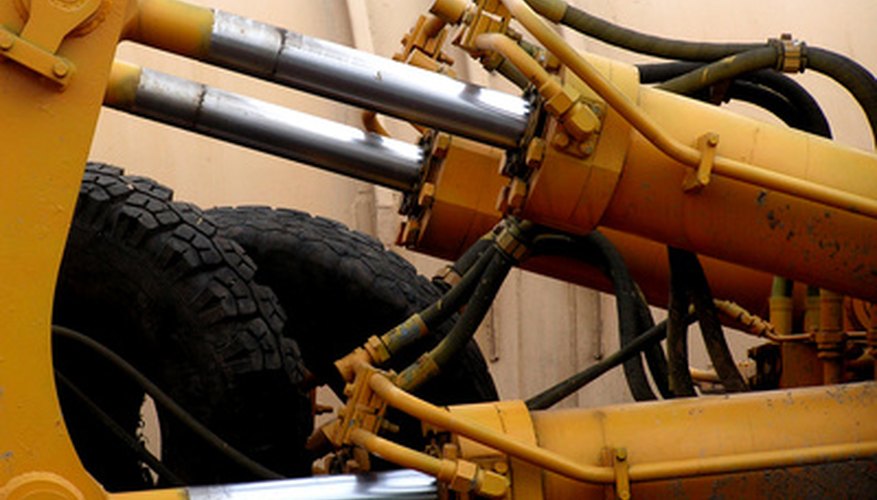Pneumatic symbols are like electronic component symbols, in that they are used on schematics and are used to indicate what type of device is being used in a circuit or in a line. Pneumatic and hydraulic systems use the same symbols. Knowing these symbols will be of benefit if you plan on being a heavy machinery mechanic or work around pneumatics or hydraulics a lot.
Lines
There are 3 different types of lines for pneumatics. A continuous line is used to indicate a flow line. A dashed line is used to indicate a pilot or a drain. A line comprised of long and short dashes around two or more component symbols, indicates an envelope.
- There are 3 different types of lines for pneumatics.
- A continuous line is used to indicate a flow line.
Circular symbols
A large circle is an indicator of a pump, a motor, or a compressor. Smaller circles are indicators of measuring devices. A half circle indicates a rotary actuator.
Squares
A single square indicates a pressure control function. Multiple squares that are adjacent to one another represent a directional control.
Diamonds
Diamond shapes represent fluid conditioners, such as filter, a lubricator, a separator or a heat exchanger.
Triangles
Triangles signify flow direction, and whether you are dealing with pneumatics or hydraulics. A solid triangle indicates the direction of hydraulic flow, while an open triangle indicates the direction of pneumatic flow.
Other basic symbols
Two other common symbols are a zigzag and what looks like two parenthesis with the curved sides facing each other. The zigzag indicates a spring is in use. The parenthesis represent flow restriction.
Explanation
These basic symbols make up the majority of the symbols in a hydraulic or pneumatic schematic. You can place multiple symbols together and create "compound" symbols. For instance, the large circle symbol, If it has a solid triangle pointing out inside of it, it means it is a unidirectional hydraulic pump. Two solid triangles facing outward and opposite each other inside a large circle, means it is a bidirectional hydraulic pump. Change the arrows to facing in, and it becomes a hydraulic motor. The triangles work the same for rotary actuators. If a half circle has a solid triangle inside, it is a hydraulic rotary activator.
- These basic symbols make up the majority of the symbols in a hydraulic or pneumatic schematic.
- For instance, the large circle symbol, If it has a solid triangle pointing out inside of it, it means it is a unidirectional hydraulic pump.
Squares work similarly. When more than one square is in a circuit or line and they are adjacent, they are control valves. Stretch them to be rectangles, and you have cylinders. If a square has an arrow inside of it, it indicates being a normally closed switch, while an arrow whose tail sticks out of the square a bit, indicates a normally open switch. Any symbols with an arrow completely through them at a 45 degree angle from the line, indicates variable or adjustable flow or control.
